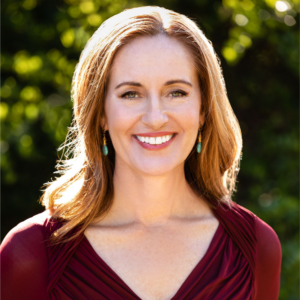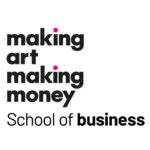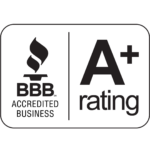Want To Sell More Fine Art? 13 Strategies To Avoid
Want To Sell More Fine Art? 13 Strategies To Avoid
artist statements
I have yet to read an artist’s statement that doesn’t make me cringe and feel a bit embarrassed for the fine artist who had to write it. I admit I used to churn out these silly little self-involved screeds for art shows and representatives.
Artist statements are just as difficult to read as they are to write, so they’re conversation killers. So can we please kill artist statements? Private collectors aren’t going to ask you for your artist statement; they’re more interested in a purchase receipt.
Click here to listen to Fine Artist Jen Colombo’s experience with artist statements.
discounting your art
If you learn only one thing here, know you should never discount your fine art. When you discount your fine art, you immediately devalue it, damaging your reputation as a fine artist by signaling that your prices have no integrity.
Collectors are already confused about the price of fine art, so an artist’s lack of confidence in their pricing further confounds collectors, and a confused mind says, “No.”
Unfortunately, many fine artists have trained collectors to ask us for discounts, so feel free to borrow my response when someone asks you for a discount. “I appreciate that you are interested in the piece, but in fairness to all of my collectors, I don’t offer discounts. My prices will increase, so now is an excellent time to buy.”
Your no-discount policy must extend to everyone, including “friends and family,” unless making fine art and selling it now and then is your hobby. Friends and family shouldn’t ask you for a discount if they truly support you.
When you discount your fine art, you are decreasing your profit margin, and if you don’t generate a profit, all you have is an expensive hobby.
If your taxing authority classifies your artistic endeavor as a hobby, you risk your future as a fine artist. Suppose your taxing authority deems that you are claiming tax deductions for your hobby. In that case, your taxing authority will disqualify your business costs and expenses, making it impossible for you to earn a part-time or full-time living as a fine artist. I’m offering general information, not tax advice, so check with your tax advisor.
Click here to listen to Fine Artist Marie Bender’s experience with discounting her art.
donating your art
So many people have the gall to ask fine artists for donations of their art to help them raise money during their charitable auctions in exchange for some vague promise of exposure.
Do not donate your art; if it does sell during a charitable auction, it will probably sell at a discount, devaluing your art and damaging your reputation. If you want to support the charity, write a check or volunteer.
Here’s the other problem: in the United States, when we donate our art, we can’t deduct the value of our art, only the value of the materials we use.
Once, I politely explained this consequence to someone asking me to donate my art, and he immediately purchased two pieces and donated them himself.
giveaway contests
Many fine artists have been ill-advised to give away low-cost reproductions of their fine art to build their email list—a ridiculous and expensive idea. You do not want an email list of people who expect you to give them something for free.
If you’re giving your art away for free, don’t expect to be paid for it. You’re setting up an irreconcilable internal conflict and confusing potential buyers.
lower-cost reproductions
If you are a fine artist, you must understand luxury marketing and sales; the affluent are not buying low-cost reproductions. It is far easier to sell an original work of art for $10,000 than one hundred reproductions for $100.
One thing I love about affluent buyers is that they are decisive and informed and typically don’t dither long about the price or the purchase.
changing genre, medium, or style
Changing styles and thinking that will help you sell your art is a quick way to abandon your authenticity and lose your vital creative interest and inspiration.
Changing genres, mediums, or styles is fine if it’s an honest, creative experiment, but this alone won’t help you sell your art. Changing genres and thinking this will help you sell your art is absurd; switching to opera won’t suddenly help you land gigs if you are a Western singer at heart.
Click here to listen to Fine Artist Jina Kim’s experience with changing genre.
creating new bodies of work
Creating new bodies of work in and of itself will not help you sell your art. If you were a pie maker and your pies weren’t selling, it could be your recipe, display, or the sign on the front door that says “closed.”
Art galleries always ask you to create a new body of work because they gain an unlimited choice of tax-free inventory to cherry-pick.
If you’re inspired to create new bodies of work, then go for it. Never mistake this effort for the larger frames around your art, your artistic reputation, and your marketing and sales strategies.
unproven courses for artists
There are too many unproven courses for artists, implying that their students can generate six figures in art sales or that they can finally quit their day job. No one but you can guarantee that your art will sell, including me. If someone promises this, then run in the other direction.
I’ve been helping other artists from 23 countries and counting for over 16 years. Since I started, many copycats have emerged. Yes, they’re less expensive, and there’s a reason. I’m not saying they don’t have something of value, but look closely at their guarantee and results.
Students enrolled in Making Art Making Money ™ graduate by selling enough of their art during their final project to cover their tuition at a minimum. Currently, 81% of my students are graduating early.
email newsletters
Email newsletters without knowing your niche are largely lame time sucks. Do you want more emails in your inbox? If you know your niche, you would not be reading this.
Knowing your niche means knowing who wants to buy your art, why they want to buy it, and where and how to find more people just like them. Your art is a respectable but expensive hobby if you’re still 100% certain of your niche.
Selling higher-priced original fine art is a very personal process. High touch equals higher touch, which an email blast is not.
Click here to listen to Fine Artist Travis Krause’s experience with email newsletters.
digital advertising
Don’t waste your money on digital advertising until you know your niche. I teach my students how to determine their niche, which doesn’t cost them a dime because they sell their homework.
Please don’t pay for likes or followers. Vanity metrics don’t matter. Authentic connections and real relationships matter. Real relationships equal revenue.
NFTs
NFTs are a very interesting frontier, but for most fine artists right now, the jury is still out on whether they’re not going to be a profitable vehicle. The problem with NFTs is they are complicated and volatile, and your target market must include the type of people interested in purchasing an NFT.
An NFT is not a cure for not knowing your niche; an NFT is only a new exchange for value. Please note. If someone approaches you about producing an NFT, it’s probably a carefully crafted scam.
eCommerce sites
You can have a fancy e-commerce site but guess what? Unless you know your niche, your eCommerce isn’t going to be yielding many sales. It’s not a matter of “build it, and then they will come.”
So e-commerce sites are often incredibly expensive electronic brochures you don’t need. You can start by setting up an Instagram Shop for free and gain free organic traffic. If you like, build an eCommerce site after you have determined your niche and not before, or you’ll have to do it again.
Overcrowded online art marketplaces
Overcrowded online art marketplaces don’t sell much art; they sell advertising to hopeful and naive fine artists. You can upload your art for free with everybody else and swim in a shark tank of other fine artists vying for limited attention.
What happens next? Then, that online marketplace extends an offer to you to gain sales. How do they do that? They offer you advertising for increased visibility for a fee.
Overcrowded online art marketplaces must have a revenue model that works for them but does not have to work for you because there’s a long line of other fine artists behind you, ready to sign up. Your art will be seen mostly by other artists amongst all their work which may or not be of quality. Remember, your job is to offer luxury judged by the company it keeps.
Click here to listen to Fine Artist Maria Bedell’s experience with the overcrowded online art marketplaces.

Ann Rea, Fine Artist & Mentor
Ann Rea is a San Francisco-based fine artist. She created Making Art Making Money™, the leading and most reputable business program for fine artists since 2005. Rea’s art and business savvy have been featured on ABC, HGTV, Creative Live, The Good Life Project, in the book Career Renegade by Jonathan Fields, the San Francisco Chronicle, Art Business News, Fortune, and Inc. Magazines. Rea’s artistic talent was commended by her mentor, art icon Wayne Thiebaud.


Good advice